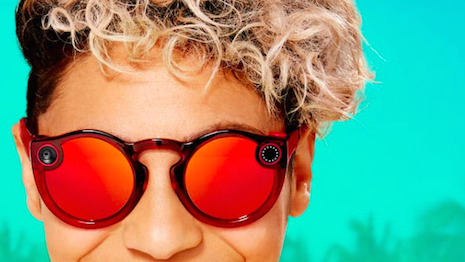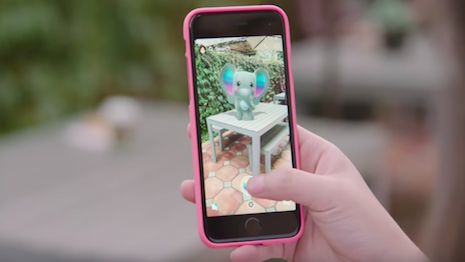After its big redesign last year was met with massive consumer backlash, Snapchat has essentially rolled back many of the major changes, hoping to appeal to both its users and advertisers.
Snapchat has struggled with monetization in recent months, particularly as its competitors continually ape and improve on its core features, such as Instagram’s popular version of the Stories format. Now, the platform is hoping that giving in to user demand will help win back the crowd.
“If we look at the situation more closely, we can see that the root cause of this is really not the re-design, but rather a conflicting set of goals," said Edward Balassanian, founder of Strings, Austin, TX. "As long as the user experience is in conflict with advertisers’ needs, Snapchat or any other platform will not be able to bridge the gap no matter how many times they re-design the user experience."
Redesign rollback
Late last year, Snapchat introduced a new redesign that radically altered how users interacted with the platform.
Snapchat users would now see friends’ Stories and private snaps all in one feed, ordered non-chronologically. Additionally, branded content was separated from user content on a completely different page along with Stories from other users who do not personally follow the user back.
To put it mildly, users were not happy. Major backlash erupted on social media, with many users demanding that the changes be reverted.

Snapchat also released the second iteration of its Spectacles recently. Image credit: Snap
The outrage culminated in a petition signed by more than 1 million people asking for the redesign to be changed back. At first, Snapchat CEO Evan Spiegel dug in his heels, assuring users that they would get used to the changes over time.
But now the company has changed its tune. Beginning this week, Snapchat is slowly rolling back most of the changes, separating Stories from private messages and going back to ordering them chronologically.
However, other changes will remain in place. For example, branded content and user content will remain on entirely separate pages of the platform, a move that has made some advertisers anxious since it makes their content less native.
Balancing act
Snapchat’s redesign changed many things, but the change that had the biggest effect for brands is how Snapchat users now engage with influencers.
While a post from a user’s mutual friend will go in the friends tab, posts made by users who do not follow the original user back, namely influencers and celebrities, will appear in the other tab.
This has already created a feeling of disconnect between users and their favorite influencers, who are now placed among advertisements and branded content instead of in the friends list (see story). While other aspects of the user experience have been modified back, this change has remained in place.
The strain placed on the relationship between Snapchat and advertisers has led the platform to make some other substantial changes to keep those advertisers happy.

Snapchat Lens Studio was yet another effort to win over consumers. Image credit: Snap
For example, Snapchat is debuting a new way for advertisers to connect with the right customers on its platform through the use of location.
The social media platform is offering two new methods for advertisers to reach customers based on their whereabouts: location categories and radius targeting. These new tools could help the struggling platform continue to monetize more effectively in the face of rising unrest from its users (see story).
As Snap begins to roll back its changes, it shows how much user sentiment affects the platform’s overall direction. Whether these changes stick or not depends on how content the platform can keep its users while simultaneously appealing to the brands and advertisers it is hoping to court.
"Snapchat’s re-design is a classic example of how the tension between the experience for the user and the brand is irreconcilable," Mr. Balassanian said. "In today’s social media landscape, brands will need to find a way to organically connect with their users in the hopes of placing meaningful ads.
"Without this, advertisers will ultimately end up in odds with consumers.”
{"ct":"dwL66dZIW7A2tb0WTgMcUk+b2NNwehjwylEC1zOeFOF+nSgwNIsZE9rJB2R1Uaml6PDxTKp7OGB7JzsfbZgbqlycaGHqJLIfkbJpvWVBxq7HhjXd3mlXyu\/0aFlSiLi0OiskRuzpps1YuOnBILytzldaRJ78UmlC4VvHHXsx7ln2PVvQMl1Dy0aTRhzNoNtF3U0Kt+p376YY0j6oC6Wl4AT58JyR36Rlh+bL3+iqTS1x7mTomtEFK1rgZa980\/DKvKl8rC2dNAeOvu+ydc8ZCUEf4SMUjLZt2I6EpvdtXDB2Qhaz+Dp\/Fveeuvb8SmUNSqN512wwHYniYFPuGBO92jBnzOnj57WaNjpeE6LIR\/ns8+MbYQ0dnHe7IG+cM0NHCafpQjvLnDp7XF1tUsqlfuZiDPaRwN81NkMOocWjemwEAzUk3M+WsrzSkXr6aNhiudrPE43jJBemw4vg5YLJMwcIYB+YRrr6nfLQzhJ97F8h16gER7nms0a3RwMsMya1rCi5qtaR04ARNcd9yH3nMejBIcNsrvt3rWw4db0GV6iDCo\/YH4xDXgEUpb8\/FUq6RAi9r8jXdtrm\/fRsKNtgwqaPcoeL57c5RsNPzj28D6YRe8NHrQ9OB+5Wrq4LBg+eDRI9kapgBs3MDfaEwgorhBqtF+fLKvPYoJZ6CcN+oyFOo0r7bXR0vEWNh\/bNk8RMQP15BjbCPwGXKmrhqLn8\/Ug4q2kCfNDB2pR8NBTedXAEQHgt4aJs7v+iJWhhUaFgQWpATzPeg2Gh7NJ3\/WsN7YD\/h1GBAsktWMLZVrsFnLA4UB13hZ0DcScjTJHLMwU0jhA8Yp1eCG\/NiXHWTc9Vamjs4fisT+FrohqqUbSxcxwyeWKnOMtCqE32HWobuOuH5LOD3hq3vyKogoHE3umfjcRTfkZZiY\/5yJW8fiQEajTOeXDy8RCKeumOHPzJKp6fPtcqmiZJzzrM7nxCakC5wGYF3IkSMnoVTCnZSf\/SrivquCYmppA4pXs56Dd+AkRJn2YLXiBsbX9DyOwgsbU2Ks7GymPObWPOK0th3El8blnHDaUC9ywQ3T57ZTOJOSRA+iCnMKn8QxjeObJd72VWrP93dLvZ2+\/zx0Ly49LMtoqhdGrxADC5Dco8ge8ybKa5uhALoC3f\/L7Oj7MDEPrraJ0oUI5icNV\/aSeCpSggPiXOw0PHFwCqsjcQrLnF\/aIZIIpVCUbjBMwVE4Ltnc5Bpd8csq96rrKQnNfkSwe6o\/RXfrgGxhGGbRJ4EtAK\/Ybw9Gq+fzaCQ4kiKq4IzWx6vA8JQJq++1mZKJVGtatf6LNAmTDhY+Aq1DspYK1hh+zJl69PHUZBZqzrxHOOEB1jxfjLNzINlgyw9ML0vuIe8MKUKvHsBKFVDmQhkKgxB0kX73AtVHq96kX5NVJvST4LUeHDIW006D23kMhlbs2RZC+sU7+eCINYHxYzw+PxXdw3bFbuI6Ix8sVYNayYozW\/xO4kUGnnqee6CtRZDjgC4YFkSiH5Jpz7H2n2zlKwMBMLQVF7A4qB8pb3SmsKwYD33DdS76yjtIaOGddcwLsUqlZV6LirmAfYho08bm5bk5p\/qs816xpDeeST5R6w7mfJn5ghZamKpxKVYF7LJD35\/Tzq9CPUHMwwReBRGHtQtYXcUyhMZl9ceJY5l9Sk3PjBt0sXiIV9fFso8U5Z5rbwSDn5WmNoDB90Ar7zHSeIExW45r+DL38P6QBqP5uyLbtRUeVpHKOizP5oKM+G+9A9DtV2hh8uBB9fiozEtPtclIB14jTLv8KVsszG1xlnwkvm1pozwpveR0CB1+v7n95zJy3Cd6nSgU9YsHNuwHjik2krMl3rjdEhoB42cbY13Nlu5wm5JKkvX4lpjdM5OIcxNYAFWeBBXHuQmjFZSUveJAkwiAj4w\/dQEn+lXVet8xP3RBs2QZA4H2wTJ7hnFbOeeBPT81X5sPKu5+aTPeuTWD6agVFBYc+ssu+E\/cLrpIR4twkrnsJv2smJ+7QZ4v3yas55TFEgZD28UBBvXuS8ja7bvjGnpdB4\/olT8H1NsXr0Zg\/L+3Wy3QsHHwpMNg9+5HBcQUde7JQVUhZgwaCPuXaUD8TWUfqGZctn\/gml9djXNwgncKXpcIl6myOufJ0YlcHL72JqItgES7ShII42+SF+aA3tTJ18hCKLM8wqZG0jygPr\/VhivPL8Elg8dSX40EBlHfVVxD7Bqz62gzqDP9\/E9kDXau8N79V6K7LW2v\/XODJ7joTDaiuhpa5nmiGp2xvUY\/7x4d6LgcMiw8H2MpEw0G\/u7RI791kN+3aJUxpI8PS\/NosBdYJTzO39sy4ZC0UKcqrhRok4n+uUA2NkklvziZMoxM3XX9eogJKeN\/ssEaqpXhmSQl3YN4exMGQ6hqB6SNQsA5NFOP2FdxA6mIsv7gA1HLtnJMJUe8WgTt7RhGbTBhNNKKZ5p1DJspmRv3BHs2UAUSU6pF3UVDkiOAu5LXjjl0D2+W6fLJ2MZpVMiswgRUN0a+SUDPmvvYkBHo9a18DLJXvjknGTD1MiociOG3HW8fMSat5bJ8kDkH2baLw1o15ihJ1kSqHISACpigaaQ2RrFnkHZjlQYLKtSWUj0z1ui4kEttXZrQK4WcnSZqXC+uhbJYwnfbzS2qvXeRUwzCFFNjn\/CWNDeQgYuyuOTPXVVXKFmwL8FgvESB+ar6QYXPbTqSwsRU5fJXxA3Lu+L6h5TFoX6aIcEsBDo7GEGibILlHG4tWxUaWgybzMWYFR+abcp8LRggjWVbbY1OMrb89QFPFIv\/G++KUP578\/YOLeEMirzcLOzypKpeb9nmGogdUXjwrwt1m5IUXwbjredTMCjmvWNF8wrilVZFC9+hL2pZoQWzUBgCu6CHb958xQaqop2A6e8OTr8zpqwLmvp9k62az4YZol4r0fwIiTg2fZUei9\/WMxpKliTsMu5hNxL1SjMU\/wvI8CLrbboSFNOwpPzIeqt7rqcK36TkiN\/3mevwl4LfGDHErnRW8mdAi0XyVLvSX16Up5aDiCvxy+UMmt1Q+4iGvmJ+VsO4Otl8kTDSKEm0nOdWbIORLdSBaYCHMcGkzMBXlaUbizxXpZjYuFS4TYEhFwvTf7a6kiHwZKPP6LlizrY+bPQeWNo6dIXXJ3CDcGXvA4umzms8UL2PZvJdFw23BQODPbLAq1Dq\/6Ja2LOvqSFwgWMHiiPR2MdB2nvpT3TkHSxO6+ttzPPiDje1aMkuCmXwhjy3qzWwCZs2xkMd+etuZp0gDBRkaSL2L9C4oxtpWF7RFu7dtcXNyxhHy+x6Ss5KLr5psz2sxQW0afw7RZ4fPMnRsEZmb4btWQOPWXqCmEtQPDAuWLV+iy2j\/2ZN\/X+6GhYpYkXzMvMHTnFjwvqDle0An6RMldalhsxSoTC6ZzPYD67iXZitnTTM207qFx2huHwo4YXRYeHNHNPe8bTkswUDI2EgmK+MDShMmhCfdaLAWvWPARb\/Gb2RRBR\/4cElP+VgvBlx3DEmfddU5R04IZlRqXoqogurkyBYdoXB+xL2gUj3\/o\/z7MpV3vDQozj2FcW6tNIeRfvyWTvlrEYupZuMs4xbES8nKO4bK9qIK0xDQxF7TSj04GTFfOl+bxZWoqQlgBnBQxjpNq78mDmbsba1XQ5ANr2Cwq4To6J85whWSVAZ2\/tYRZFlbsvXk21l3vceXm627d8Le1H0eWpbbpkphPZ3MX2P8uChwfSVCCIgLRhdbQ0PiT4b+KvBMxocsegIe6sbA70Prfew3fE0B2I\/YqvmF9\/XN3lkzcvzQgIFlVob8V563grcqUmRKjnjlOptgWgaVcwsVSJDGJeqaE4OFa6eXfGozrwkWroC2SGPRUbY1qaQDQ+u\/Z7nFrc48HpD7KR\/vLWwf04rl0KpSIz+KFnlSDJi7blTxpsB61QH8vYLex4oA+6BzRHQ3ebdHVezyN\/kdy9zDZdzALQaYLIIHW8JNgj372u4Ki\/pl\/Yc7pTTzo6sBpQ\/JPBkk19CMwvgIA87WgVgFElOC81lK+Ho9NKnqCQkfcrC9qNf+9AEHr2GB6NE297hrFP7ONRjQkKkbYaRbpK+BiWAdylkH7RT9NPAe2l6+BSVyRRA+wwAkiVQKO3NbJhPudr9JedkSh7Qmj2EDtHDf5WqO41YvVGBxLwA43tOGMx5FfHdfh0oXfm9I2jqp6LFXWBPqyD5iV7\/xkpdEp\/jqc0CxcEtlkmKiNMoxP\/fO2chiTuOklKhHl6YJ+00u9d\/GDAOU5Ta9W8tCn+ccFitSQ1CStBT2UFzMiP1ZhML7LrfLvlvnmC\/0WlGGdEMiLRTcU4o72cnoMDNj6QyQZbSimPyLP0r1lH\/IS5InSG4zUJh2GuAgQcwNBoFkQUq9mSFfp4o4Mn1sxTwg\/WHZw7r3vU1wJj\/PyxDlR5iNJMyWDywp4T+6+CuKEySzjRCCClOirjWiMILM+R0hta+zxB5XFiiG+u\/ZzVHcvXF33VgtOIzyTBgwsDvhD528qv190Otp0Qt9XDHZDsSc6B4ZkMGkRcHaZlR0e8n2UTyiYnsoOSH35CxTK0pReCSLz0w+DOSFNor3tLgFN3EuzG3\/VKMb5V8iyyVtNkPV0ut\/2ZhdNCdjWvT9a8w0NP2qk0L3i6cYhwnmVVc2QJB5Jd9s+\/fKaOMo81n+yIOgMVLtM+2lBk2g7GS0JQj0jCCrahbsNN6E4G2rOsK63p34R2QMSb9sPEAHYi3kqM8JAb5pujunPsd5bk+YMA8reFlOH4vE5O5B810Tx0yNDt4LsginKy12JYcw4pEJtvxZhURYlDyPdEEWQsqIBlKcEj4u2+zUWSBKUrsH0CQcEWOEkIQqKCChQLb48gzK\/5ewYK5yhbME6sZch71gAVIsy3arNmvEx\/EuSpUiv9qIEKWpZEyxAieLvYdS3FGZsC\/bpzxu5CNbw0cpKz4wQfeUeVIOVDQt21HWLsjQWU2091NIUVeetA4225Bjyp5h1lbQQjj8q0RgTXB3tLMQZlVhE6VwzxXS\/UQDx4qFL38YPGdXdCa+R42RxmeoOOasehYmnJFRjbN8QXkOqKapBS7jqZdh7TIbzDcaKAwYgeXxwwML1CcqBTFOJjCLVcidzAZTfVZZqE8pyDv\/B5nl11\/rTY7lAga1Y5gpP1ScBdQHg8u+0AVQnF+Sj3UsrgU+CzSWZVzDeLjWlmFNI773AhURnrVjIjtAnOcCyx3GNJi168xQCfE1iH2zGnwHOm86CCum\/kVgv7QkdKbg0F8wTvxqJgbOFELGHJgh2\/Pxq2yo5mdScbY0BAbBKnHc2aTwrXFZC1SyxFCzeTiSrLyOFNx3Nc\/lFrBbL6h05\/RnvNhyvkD0d+hxSf5LSS8GYNF2shsTJ7zmBtiUVVw+nBaP3ZUZVqOSQZZAuuMSmhNV57fQLsQw0kMqEJWpQ3fDJHwInaqOfWvZh4X+wZxaa8CZSTpZTD7Vf1+j7FwX\/aQOTtloEFI36N4Fi4GmDZVqswKraqsniojEgKMza115bOykVXOGlhptVpY66xgAyXfSKb3UFIaADZssGDe30ZN1V3kYgi\/+ghncoHhef83tPq346Ij9CS0Gvg\/o\/GtkDUhYCWuQSY87na56tRwufLSyx0\/BZGWHhokFYHVItAh4n6hi1760BQ69+7XL++TdoRudOsIm8KIxZgljbei+UWktF7doVCkDwQ2yjCtaBLyUFuUVwiArkuwaB7BDnnh\/F+0f+0E1xvOmSF4lyTkOwVprtbrWIEvgOsCsdaF5coRk1G7ONzDQX8l6uZFgtpCQvGy8HqVxMynNHu6EMotiw6f\/Abd92ilGbEn2Oahsx3BskDj3\/chV1qGtlMntgQRpbZimHiP+mUeJ8uAz\/Z6Vij0LHJo84ahHND\/skh5Jywa1g4lJU1mY3M73R9lAgGVIoxCM21si3OBucRK3prF0nD+UTjBBwOVLs+jI5c36oAwKRdH5+HURDPoARlzV+zXREYldHE6HsWQpiIrh3+GQEuq4Uuh\/F0peil1EnkFpzJPMShl+PgDv2VK\/+AOERe0jQBiGkOx4HasU1Un5IrPeJ8MDXghdGCP4m9az5lqj022a5mH0ZLSJzjw+crgnwLTKmiMOHJuSb1OolkEZDQvwh4UyfOGYiRFeCRJkNptu\/Hx50AdnKGmJAeLWdnWii8dSyRAJ1UL+x1bo4PtAXW5njuydKwqf4Jslbcvjo7V6tQUW3zVF4RfzKFvxieVzOYsCadMbxbpcvi1q+HrNUV9OVnvmvLHTUqUhs\/kT1LPYNOhqWGdjER+tMf4\/DtSrkcL409Upe2a0yJOe8G+opOmqKIH1cxA\/fCEJwpOeRi5JQJ4tV7\/GoW4hksCd7DrvaJCF8lMqXH33I+R3q7ECAjaFjL3GraNCIA96U63LL34tkWn\/oRxWdBQUCilF8rInFOA9mwFLNHk3ApgvXPC6FjM8rcRHHYBT2TZoRMVDKiWaitL6TgNB\/LnoMHP5m6fW2v0yY+bCgnki59jAs7rhU6RH31NnG8k2PZojDx0OHYP\/eLsnJ4OH6cyKxS0LZb9EQUXrLxM6jO7AvylPwo47m\/Db9Lk5AKgnVkF3+9ndUPepq\/3Og5pGUVrcrdTKqfKBqgJr6lgw60SmMTga6CEmGuXTnHHoh8tJ3pESQch\/98THFt9L\/2QkqXZ8x5XYM48oXgxscg6vLeS\/LdNySTcT0CAwzAhtowuY8O6INinFsJjQStS5uINjx91R0uQNtAAvOsHlPpBauCE85QYLn42ExPEs8VIRRWj73rs52gBRlYZYbaN5fesuGRXoR5HURg\/fOyu9YQYBrpkPqrTRa8W75etqm9PKLw5jgolIC+S2+JJp+YfHJdjUz1NhtFb+3+SaSoNZRzOs3ETHVAPQzMXqD\/908F\/5CCMGLU3KJpI12ViHQpYLn8kQiou+8NA6BUlJqbuN0zmz7Fc9AyZ\/2yOsy9sajE0yol9d1Z1p8mFdVnmqluT6ChMIsbeH1p25DNBwXk+CMu6zP3PdzdBcTfg1xExSLG1KZxIhJvmCuyR6J9ndaVUhv3futfMq1YJ70+JjcfOq8uxhT2iTNd095QiM8\/xbABVUfPVqRpL3qhDdK3gwvDKMvsZTTrpCqaAMWvceQARDOqPVejnQBRf2UlrfD7qg8P8hb\/CR0uFv7Z7nx4TXQvvn4hlNF38ODDSwhAy1wGTa4gMNgdVRdzXDV0jYY4IKXTgTdAdjQC5zLq0RuNRgcPf3aRsmLi5gWK12iYMA01YVjmCsYaBDBz\/Sdw0q5lHFNy\/yCji9LNXneBcQVUQaEXd0RJkeUQyHNUdShsoiJMcm8Bl8rcalNA0JtMtsoh5gEtW2jtsbS5cXZ\/Az9QlcLhEtAIWM\/ZGnkksAzzEqyqCIDM2cnpwLEscZgGiRgi5VUw\/qGAJ8dQ8gG0n\/URfVlZzUl062LqmZZnbgt0PqtLM3236b1TOybwYUAXhXdAOfpKzDjf7mkB9MFx449QYf8cHB\/kJo7QP5gfNSf8Vy3r+\/0v5wzEjMDxuRB\/Xgh773fECukLeqvZ0CLBY4L6TJh7x4qCB30kmNMeQksCO0s\/MkXvMaKkYzWDSeo91uf7zvKijzkZlnHP5QaODWo0lhO2Qyuv8ivHthV1ZdCb8jkBiQVh5yFSGOlyZg+6GJ1FWeeodK9TwsYHg2ttA==","iv":"7a2b9b40b0f6f1e3bef0696e5166ea6d","s":"438e028e58f69595"}

 Snapchat is bowing to pressure from users to roll back its big changes. Image credit: Snap
Snapchat is bowing to pressure from users to roll back its big changes. Image credit: Snap